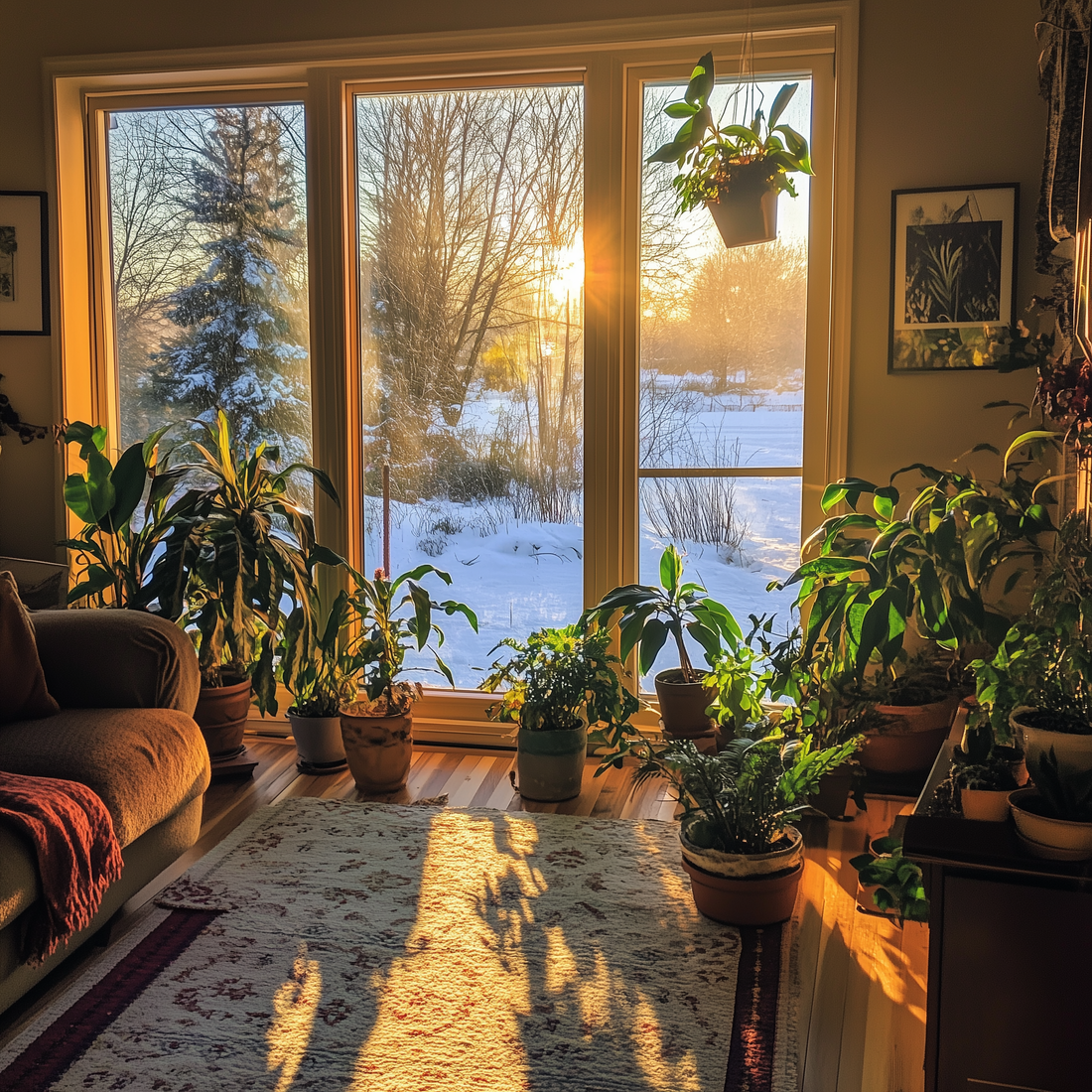
Top 10 Best Houseplants That Thrive During Winter
Share
Winter can be a challenging time for indoor plants, as shorter days and reduced sunlight can slow down growth. However, many houseplants are well-suited to thrive during the cold season. Here’s a guide to the best houseplants that will stay vibrant through winter with the right care.

1. Snake Plant (Sansevieria trifasciata)
- Why It Thrives in Winter: Snake plants are known for their hardiness and can tolerate low light and infrequent watering, making them perfect for winter.
- Care Tips: Water only when the soil is dry and place in indirect sunlight.
- Benefits: They’re excellent air purifiers and add a modern touch to any space.
2. ZZ Plant (Zamioculcas zamiifolia)
- Why It Thrives in Winter: This plant is drought-tolerant and can survive with minimal sunlight, making it a winter-friendly option.
- Care Tips: Water sparingly and place in a low to medium light spot.
- Benefits: Its glossy leaves bring a vibrant green to your interior during the darkest days.
3. Spider Plant (Chlorophytum comosum)
- Why It Thrives in Winter: Spider plants are very forgiving and adapt well to indoor conditions, even with fluctuating temperatures.
- Care Tips: Water moderately and ensure it gets some bright, indirect light.
- Benefits: They’re easy to propagate and help purify the air.
4. Pothos (Epipremnum aureum)
- Why It Thrives in Winter: Pothos are among the most resilient houseplants, growing well even with lower light and humidity.
- Care Tips: Water when the top inch of soil feels dry and place in moderate light.
- Benefits: Their trailing vines can make any space feel more lively.
5. Philodendron
- Why It Thrives in Winter: Philodendrons adapt well to various light levels and require minimal watering.
- Care Tips: Keep soil slightly moist and place in medium light.
- Benefits: This plant adds a lush, tropical feel to your home.
6. Peace Lily (Spathiphyllum)
- Why It Thrives in Winter: Known for its low-maintenance needs, the peace lily can thrive with low light and cool temperatures.
- Care Tips: Water when the leaves start to droop and avoid overwatering.
- Benefits: Its white blooms can bring a touch of brightness to your space.
7. Christmas Cactus (Schlumbergera)
- Why It Thrives in Winter: As its name suggests, the Christmas cactus blooms during the winter season, adding color to your home.
- Care Tips: Place in bright, indirect light and water when the top of the soil is dry.
- Benefits: Provides cheerful pink or red blooms that last for weeks.
8. Chinese Evergreen (Aglaonema)
- Why It Thrives in Winter: This plant is well-suited for low light and cooler indoor temperatures.
- Care Tips: Water when the soil is dry to the touch and place in indirect light.
- Benefits: Its patterned leaves can add a splash of color even in dim lighting.
9. Jade Plant (Crassula ovata)
- Why It Thrives in Winter: Jade plants are succulents, meaning they store water in their leaves and can handle dry, indoor winter air.
- Care Tips: Water sparingly and place in a spot with bright light.
- Benefits: Known for symbolizing good luck and positive energy.
10. Aloe Vera
- Why It Thrives in Winter: Aloe vera is another succulent that can withstand low water needs and winter light conditions.
- Care Tips: Water deeply but infrequently and ensure it receives some direct sunlight.
- Benefits: The gel inside its leaves can be used for skin soothing.
Winter Care Tips for Your Houseplants
- Reduce Watering: Most houseplants need less water during winter as growth slows.
- Maintain Humidity: Consider using a humidifier or placing plants on a tray of water with pebbles to combat dry indoor air.
- Clean the Leaves: Dust accumulation can block light, so keep leaves clean by wiping them gently.
- Avoid Drafts: Position plants away from cold drafts or heat sources to prevent stress.
FAQ Section
Q: How often should I water my houseplants during the winter?
A: Most houseplants require less water during the winter months as their growth slows. Water only when the top inch or two of soil feels dry. Be cautious of overwatering, as this can lead to root rot.
Q: Can houseplants survive in low light during winter?
A: Yes, many houseplants such as snake plants, ZZ plants, and pothos are well-adapted to low-light conditions. Consider moving plants closer to windows for better light exposure, or supplementing with grow lights if needed.
Q: How can I increase humidity for my houseplants in winter?
A: To increase humidity, use a humidifier, group plants together, or place them on a tray filled with water and pebbles. Misting plants can also help, but it may not be as effective for maintaining consistent humidity.
Q: What are signs that my houseplants are struggling in winter?
A: Signs of stress include yellowing leaves, drooping, slow growth, and dry leaf tips. Adjust watering, light exposure, or humidity to help them recover.
Q: Do houseplants need fertilizer in winter?
A: Most houseplants enter a dormant phase during winter and don’t need fertilizer. Wait until spring when they begin active growth to resume fertilizing.
Q: Can I move my houseplants closer to a window during winter?
A: Yes, moving plants closer to windows can help them get more light, but avoid placing them too close to cold drafts or directly touching cold glass, as this can cause stress or damage to the leaves.
Q: Is it normal for houseplants to drop leaves in winter?
A: Some leaf drop is normal as plants adapt to lower light and humidity levels. However, excessive leaf loss could indicate overwatering, insufficient light, or other environmental stressors.
Conclusion
Choosing the right houseplants for winter can make a significant difference in keeping your indoor garden lush and vibrant year-round. With minimal care, these winter-hardy plants can thrive and brighten your home even during the coldest months.
